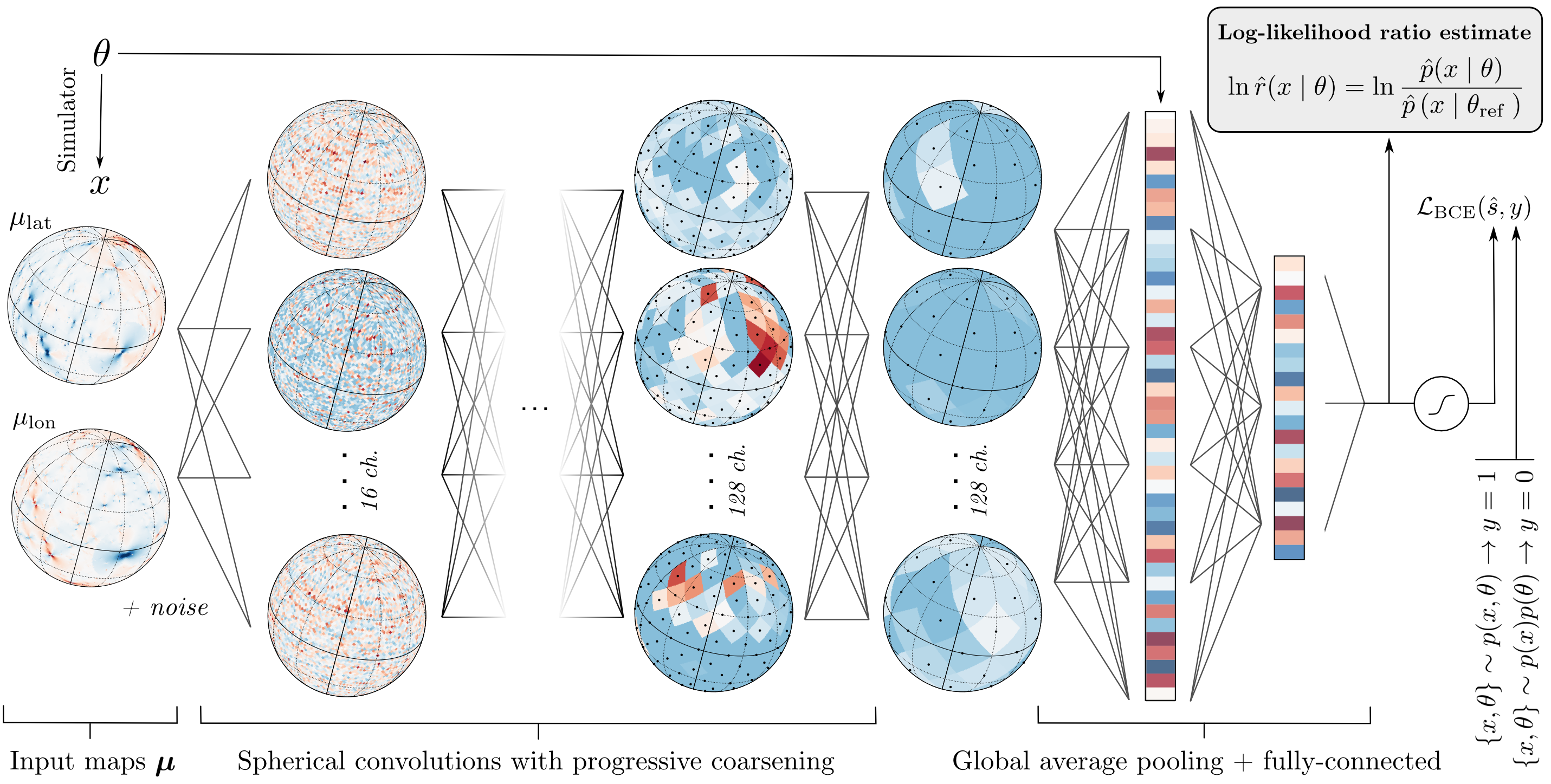Inferring dark matter substructure with astrometric lensing beyond the power spectrum
Astrometry -- the precise measurement of positions and motions of celestial objects -- has emerged as a promising avenue for characterizing the dark matter population in our Galaxy. By leveraging recent advances in simulation-based inference and neural network architectures, we introduce a novel method to search for global dark matter-induced gravitational lensing signatures in astrometric datasets. Our method based on neural likelihood-ratio estimation shows significantly enhanced sensitivity to a cold dark matter population and more favorable scaling with measurement noise compared to existing approaches based on two-point correlation statistics. We demonstrate the real-world viability of our method by showing it to be robust to non-trivial modeled as well as unmodeled noise features expected in astrometric measurements. This establishes machine learning as a powerful tool for characterizing dark matter using astrometric data.
PDF Abstract
